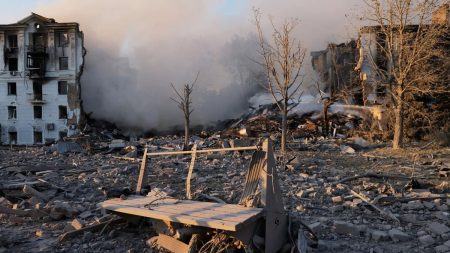Storm Herminia, a powerful weather system, swept across Western Europe, impacting Spain, Portugal, France, the UK, and Ireland, leaving a trail of disruption and damage in its wake. The storm, characterized by hurricane-force winds, torrential rain, and formidable waves, prompted weather warnings across the affected regions. Spain, where the storm originated and was subsequently named, experienced the most severe impacts, including a reported fatality due to a weather-related road accident in Ourense. Power outages also plagued the Galicia region, affecting over 13,000 residents. The storm’s intensity underscored the vulnerability of infrastructure and the potential for tragic consequences in the face of extreme weather events.
France also bore the brunt of Herminia’s fury, with eight departments placed under orange weather warnings, signifying a significant risk of dangerous weather phenomena. Ille-et-Vilaine, a department in Brittany, faced the most critical situation, escalating to a red warning, the highest level of alert. Rennes, the capital of Ille-et-Vilaine, experienced its most severe flooding in four decades, a testament to the storm’s exceptional strength. The persistent rainfall led to rising water levels, necessitating evacuations and prompting local authorities to issue warnings of continued unfavorable conditions in the near future. The flooding disrupted daily life, forcing residents and businesses to grapple with the immediate aftermath and the potential for further inundation.
The widespread flooding in Rennes caused significant damage and disruption to residents and businesses. Cellars were inundated, requiring continuous pumping efforts to mitigate the damage. Shopkeepers faced the daunting task of protecting their inventory from rising floodwaters, resorting to makeshift solutions like raising roofs and stacking breeze blocks. The urgency of the situation highlighted the limitations of existing infrastructure to cope with such extreme weather events and the resourcefulness of individuals in adapting to the unfolding crisis. The demand for building materials to protect properties outstripped local supply, further compounding the challenges faced by the affected community.
The UK, while experiencing less severe impacts compared to Spain and France, still faced disruptions due to Storm Herminia. Devon and Cornwall, situated in the southwest of England, remained under a yellow weather warning, indicating potential hazards from strong winds and heavy rain. Over 1,000 properties in the region suffered power outages, disrupting essential services and adding to the challenges posed by the storm. The extensive power outages emphasized the vulnerability of power grids to extreme weather conditions and the potential for widespread disruption to daily life.
The impact of Storm Herminia across Western Europe serves as a stark reminder of the increasing frequency and intensity of extreme weather events. The widespread damage, disruption to essential services, and displacement of residents underscore the need for robust infrastructure, effective emergency response systems, and community preparedness. The storm’s impact also highlights the importance of international cooperation in sharing weather information and coordinating response efforts to mitigate the consequences of such events.
The aftermath of Storm Herminia will likely necessitate significant recovery efforts across the affected regions. From restoring power and repairing damaged infrastructure to providing support for displaced residents and businesses, the road to recovery will require coordinated efforts from governments, aid organizations, and local communities. The storm serves as a call to action for increased investment in climate resilience measures and a renewed focus on mitigating the risks posed by a changing climate. The experiences of those impacted by Herminia underscore the urgency of addressing climate change and building a more sustainable and resilient future.














